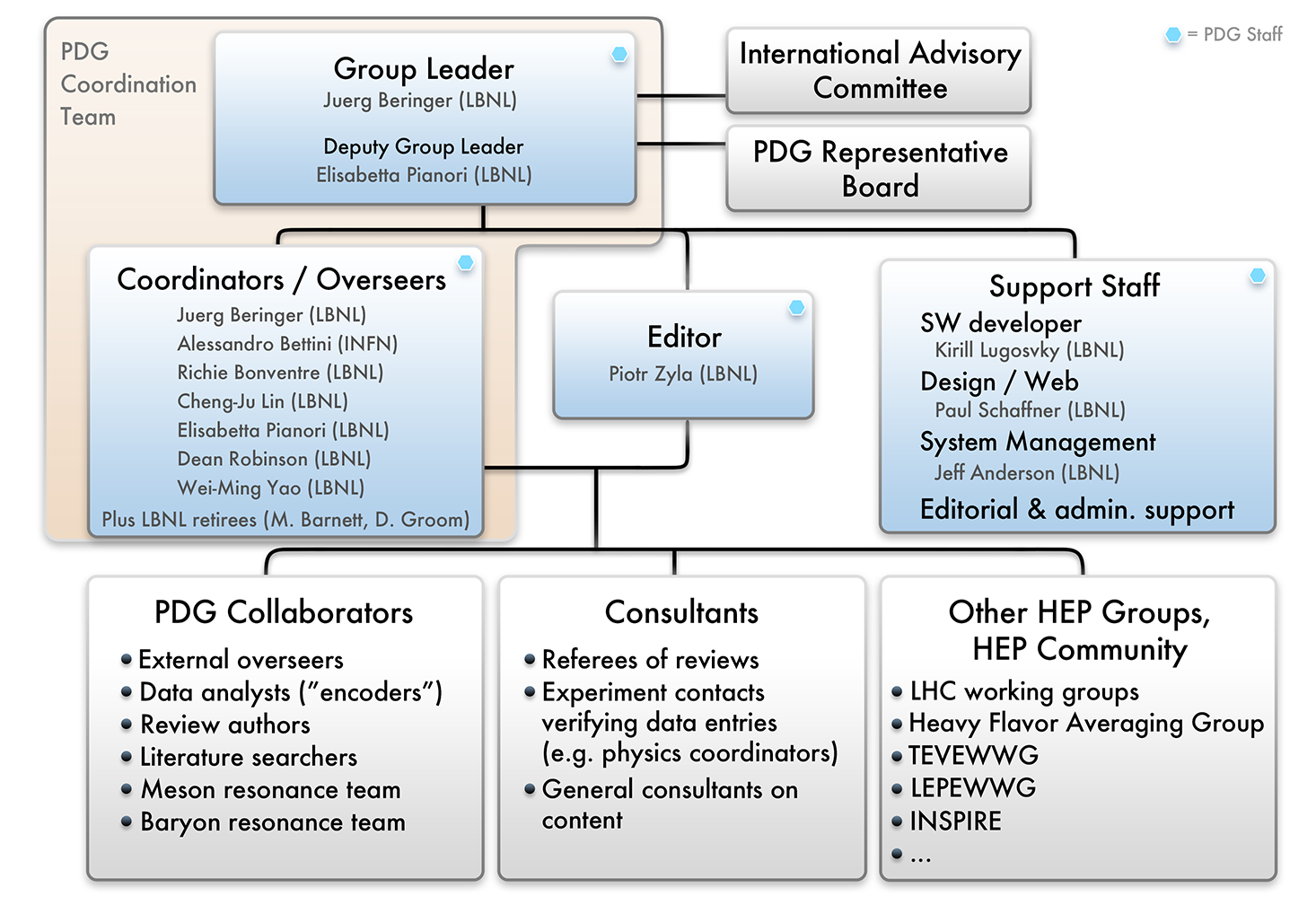The Particle Data Group (PDG) is an international collaboration that provides a comprehensive summary of Particle Physics and related areas of Cosmology: the Review of Particle Physics.
The PDG collaboration currently (as of the 2021 web update) has 262 authors and 5 technical associates from 187 institutions in 27 countries.
It is led by a coordination team based mostly at Lawrence Berkeley National Laboratory (LBNL),
which has served as PDG's headquarters since inception.
In fall 2017, the coordination team was expanded to include a person supported by INFN.
The organization of the PDG collaboration is shown in the figure below.
The Review of Particle Physics is updated yearly and published every two years in a HEP journal.
It includes a compilation and evaluation of measurements of the properties of known elementary particles and summarizes searches for hypothetical new particles.
For the 2020 edition, 3,324 new measurements from 878 papers were added, in addition to 41,371 measurements from 11,322 papers that first appeared in previous editions.
120 individual review articles discuss topics such as as Higgs bosons, supersymmetry, Big Bang nucleosynthesis, probability, statistics, accelerators and detectors.
In addition to the 2,000-page journal publication, the Review of Particle Physics is available as
- a printed PDG Book (1,000 pages, the Particle Listings are no longer printed),
- a Booklet (300 pages, also available as a mobile version),
- PDF files on the PDG web site,
- interactively from pdgLive.
